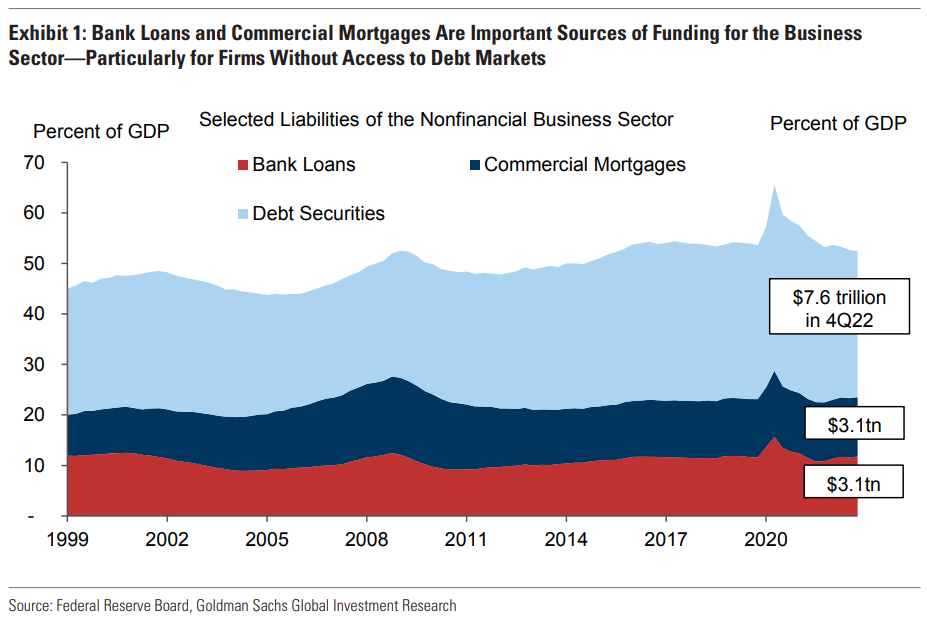Goldman leads us off with who is in the way of a US credit crunch.
Which industries are most exposed to a pullback in bank lending, and what should we expect in terms of the spillovers to the real economy?
- We estimate the industry distribution of bank loans by aggregating the loan books of eight regional banks with a combined $480bn of commercial loans. We supplement this approach with the sector-level composition of bank loans reported by the Federal Reserve and with industry-level data from the Census Quarterly Financial Report, which is the source data for the corporate profit statistics in the national accounts.
- We estimate that the manufacturing and commercial real estate industries account for nearly a third (29%) of bank borrowing—and the combined share would be closer to 50% if we include commercial real estate investment across other industries. Manufacturing also uses bank lending more intensively than the broader business sector: we estimate 36 cents of bank loans per dollar of manufacturing GDP, compared to 24 cents across all businesses. Manufacturing and commercial real estate account for a third of fixed investment GDP, which we expect to be disproportionately impacted by tightening lending standards.

Advertisement

